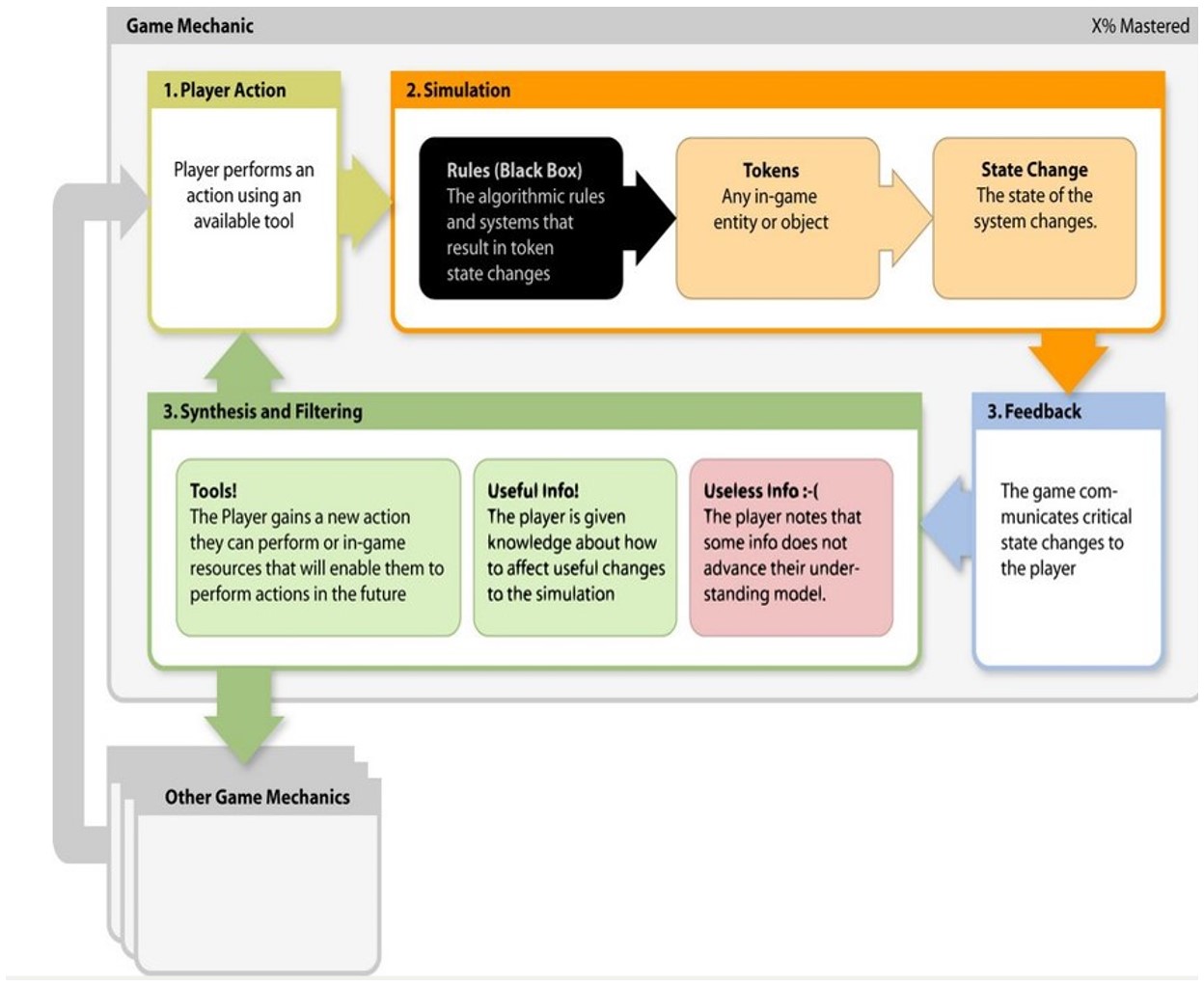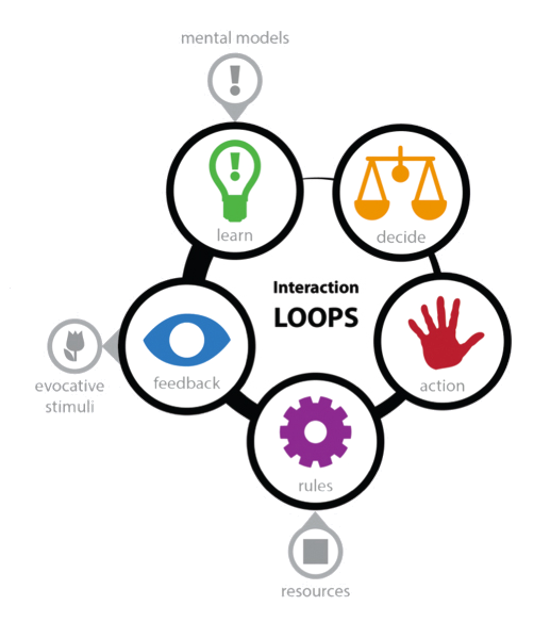Game Systems
A system is defined as a set of interacting or interdependent elements forming an integrated whole. A system, by definition requires that all elements be present for it to accomplish its goal.
Which of the following is a system?

A toolbox is a collection of tools, but they are independent of each other. A kitchen is like the toolbox has independent elements. However, if one was to cook a meal, the process of cooking is a system, which would depend and interact with the kitchen. A game of soccer is a system, as it requires several interacting or interdependent elements to be played.
Elements of a System
Systems are made up a several elements which include
- Objects: building blocks of a system
- Properties: attributes that define physical or conceptual aspects of objects
- Behaviors: potential actions the objects might preform in a given state
- Relationships: how objects relate (interact) to each other
A simulation is the representation of the behavior or characteristics of one system through the use of another system
A system's integrity (i.e. wholeness) is only as good as the systems that affect it and, in turn, are affected by it.
Games are designed for player interaction. To create an interactive system requires:
- Information Structure
- Controls
- Feedback
Information Structure
An information structure provides information about the game objects and their current relationships to each other.
How information is structured in a game has a large influence on how players come to their decisions. Many games use a mixture of open and hidden information so that players are given some data about the state of their opponent's game, but not all
A dynamically changing information structure provides an ever-shifting balance between strategy based on knowledge and strategy based on cunning and deceit.
Controls
Control is the ability to director or influence something or some outcome. Controls provides players to make choices that they perceive will alter the outcome of the game.
Control overload occurs when you provide with to many controls and choices within the game. Providing players with more than 5 controls can cause them to forget which control does what during gameplay and can ultimately lead to button smashing.
Feedback
Feedback is the positive or negative response to the player's choices (actions). Feedback should encourage learning. Learning refers to learning the rules of the game Learning gives players a sense of accomplishment.
Audio is regularly used in video games as a feedback device.
Feedback Loop
Complex systems are often made up of various loops. A loop can be defined as a process in which the end is connected back to the beginning. A feedback loop is one of the most common types of loops in a system. Feedback loops return the system's output as the input, which in turn affects the next output.
Each feedback loop is made up of a minimum of 4 stages:
- Input is created
- Input is recorded and stored
- Input is analyzed
- Analysis yields decision
Within a single game system there may be many different feedback loops. The game mechanics feedback loop takes player input and asses it based on the rules and procedure within the game.

In the paper Gameplay and Game Mechancis Design: A Key to Quality in Videogames, researcher Carlo Fabricatore shared that the main sources of fun should come from feedback loops. Interestingly enough we define Game mechanics, as the construct of all formal elements, predominantly the rules and procedures, intended to produce enjoyable gameplay. Therefore one could make the analogy that if our game mechanics are designed with a well throughout feedback loop enjoyable gameplay is ensured, however, it is not always as simple as that.
Gameplay Loop
While game mechanic feedback loops focus on functionality of the game, the feedback loop for gameplay, often referred to simply as gameplay loop focus on the palyer interaction.
Gameplay consist of all player experiences, primarily the challenges, choices and consequences that the player faces with in the game. The gameplay loop should be comprised of a series of actions that are designed to reward the player for their efforts while continually pushing them forward.
While gameplay loops can look very different depending on the game, one of the essential features of a successful gameplay loop is its ability to hook the player into continuation. A good gameplay loop should also provide enough variety to allow players to play the game in a way that suits them best.
Interaction Loop
Game designer Daniel Cook, cited that all games are comprised of common structural elements called interaction loops, which are made up of the following:
- The player starts with a mental model that prompts them to
- Apply an action to
- The game system and in return
- Receives feedback that
- Updates their mental model and starts the loop all over again. Or kicks off a new loop.

According to Cook, these loops are fractal and occur at multiple levels and frequencies throughout a game. They are almost always exercised multiple times, either within a game or by playing the game multiple times.